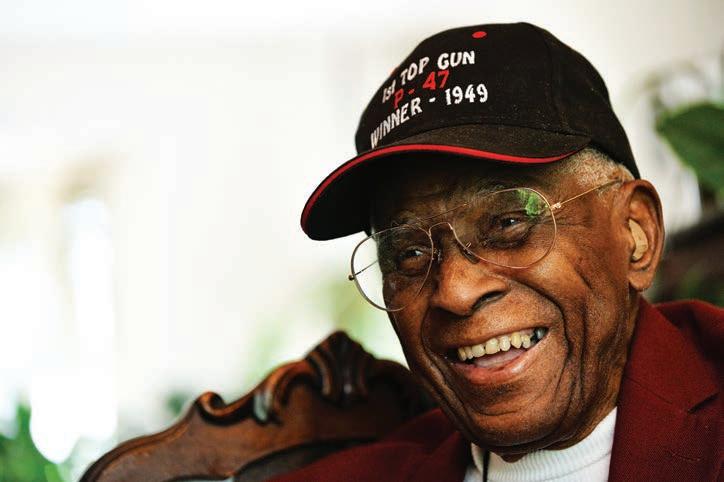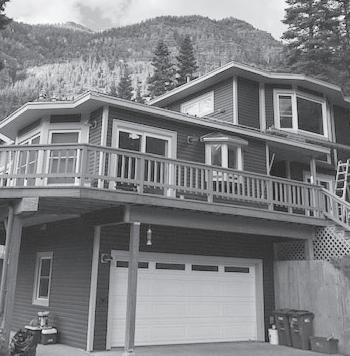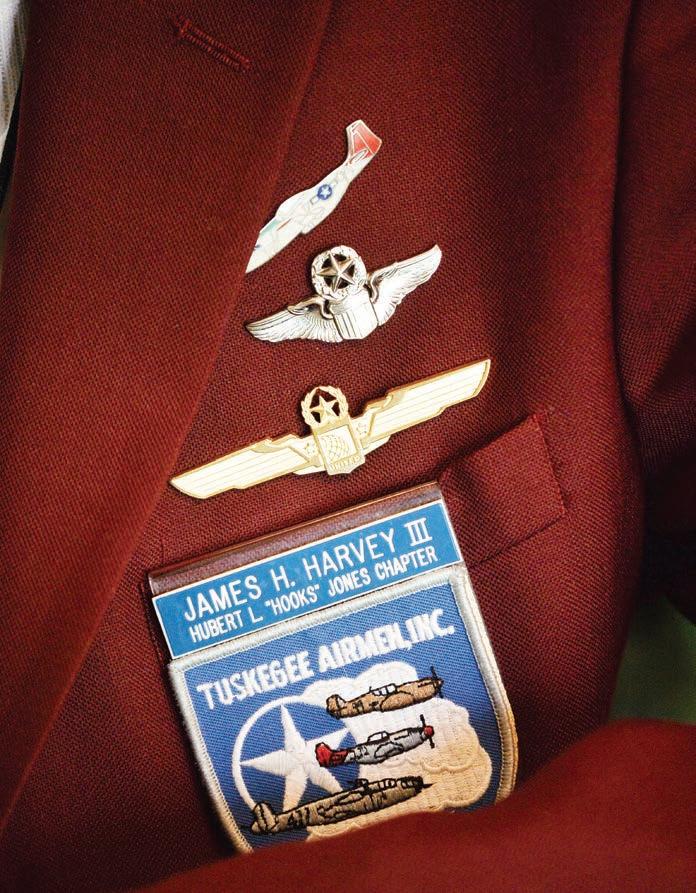
1 minute read
Tuskegee ‘Top Gun’ James Harvey turns 100
BY DEBORAH GRIGSBY DGRIGSBY@COLORADOCOMMUNITYMEDIA.COM







James Harvey remembers when there were two Air Forces. “One comprised us, and the other was for the whites,” explained the soon-to-be centenarian from his home in Lakewood, Colorado.

Harvey knows this as fact because he’s one of just a handful of remaining Tuskegee Airmen, a group of Black military pilots and airmen who fought not only against enemy aircraft but against overt racism in the same Air Force they pledged to serve.
Born July 13, 1923, in Montclair, New Jersey, James H. Harvey III was the oldest of four children born to James and Cornelia Harvey. He attended high school in Pennsylvania, where he was an outstanding student, the captain of the basketball team, class president, and graduated as valedictorian.
Harvey said he never encountered much racism until he raised his right hand, swore an oath to serve and protect his country — and entered the segregated U.S. Army.
Drafted in 1943, he was soon reassigned to the Army Air Corps., the predecessor of today’s modern U.S. Air Force.
Harvey will tell you in great detail that things in the military were di erent back then.
Very di erent — especially if you were a Black man.
“You just go with the ow,” said Harvey of how he coped. “You just go with the ow or something happens
— something mysteriously happens. So, I just went with the ow.” When asked why he did, he replied, “Because I wanted to live.”
Harvey settled into military service, classi ed as an engineer. As the war in the Paci c raged, engineers were needed to build and maintain the many makeshift jungle runways used by American forces. But Harvey was more interested in ying planes than building places for them to land. So, he applied to the Aviation Cadet Training Program in hopes of being accepted into the Tuskegee Flight Training Program in Alabama, a separate school designated for Black pilots.
In 1925 the U.S. Army War College released a report called “ e Use of Negro Manpower in War.” Many say this report “set the overall tone” for how the military viewed Black men. e report stated they “lacked intelligence and were cowardly under combat conditions” and lacked the “ability to operate complex machinery.”
To prove this, the U.S. Army set up an “experiment” in 1941 to prove the ndings of the War College Report.
Tuskegee was an experiment that was designed to fail—to prove that Black men didn’t have the capacity to y.
But instead, the program produced some of the nation’s most pro cient ghter pilots.
“I applied. I was accepted,” said Harvey. “However, I had to take an examination rst, and there were 10









